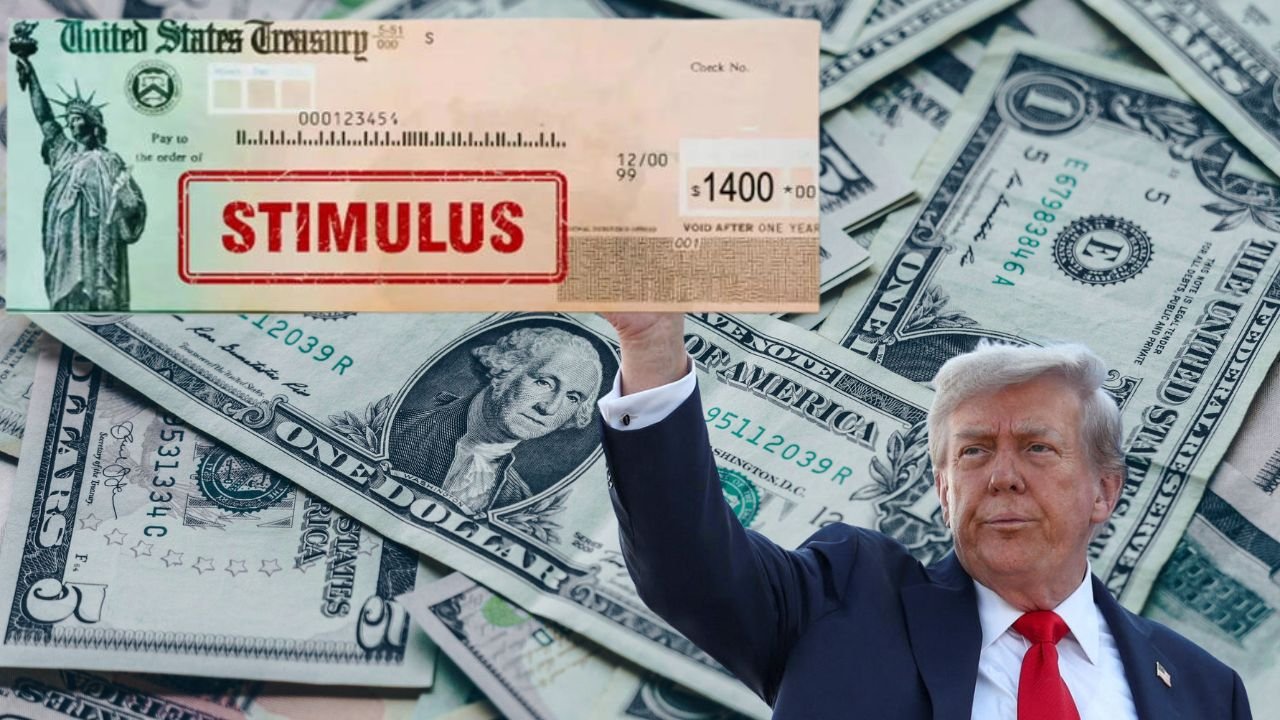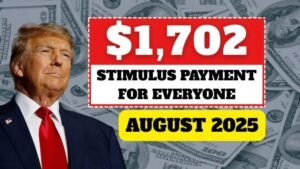The Internal Revenue Service (IRS) has confirmed that millions of Americans will receive a $1,390 stimulus check starting in late summer 2025. This one-time payment aims to help people struggling with rising costs for things like rent, groceries, and medical bills. Unlike rumors about larger payments, such as $2,000, this $1,390 amount is official. This article explains who qualifies, when the money will arrive, and how to avoid scams, all in simple language.
Why Is the IRS Sending $1,390 Stimulus Checks?
The U.S. government, through the IRS and the Treasury Department, is sending these payments to support low- and middle-income families. With inflation making everyday expenses like food, housing, and healthcare more expensive, this tax-free payment is meant to ease financial stress. It won’t affect benefits like Social Security, Medicaid, or SNAP (food stamps).
Purpose of the Stimulus Payment
The $1,390 check is designed to help cover essential costs, such as:
- Rent or mortgage payments
- Groceries and utility bills
- Medical expenses
- Childcare or education costs
This relief is part of a larger plan to help Americans manage inflation, which is currently at 2.7%, higher than the Federal Reserve’s 2% goal.
Who Can Get the $1,390 Stimulus Check?
To qualify for the stimulus check, you need to meet specific income and tax requirements. Here’s a breakdown of who is eligible.
Income Limits for Eligibility
| Filing Status | Income Limit |
|---|---|
| Single Filers | Up to $75,000 |
| Married Filing Jointly | Up to $150,000 |
| Head of Household | Up to $112,500 |
Other Eligible Groups
You may also qualify if you receive:
- Social Security (including SSI, SSDI, or retirement benefits)
- Veterans Affairs (VA) benefits
- Railroad Retirement benefits
Families with children or dependents might get extra funds, though exact amounts for dependents are not yet confirmed.
Tax Filing Requirement
You must have filed your 2024 federal tax return to be eligible. If you don’t file taxes but receive Social Security or VA benefits, you may still qualify automatically. People who haven’t filed taxes or don’t get benefits can use the IRS Non-Filer Tool (available in 2025) to apply.
When Will You Get the $1,390 Stimulus Check?
The IRS plans to start sending payments in late summer 2025, likely around August. The rollout will happen in phases over several weeks, so not everyone will get their money at the same time.
Payment Delivery Methods
The IRS will send the money in three ways:
- Direct Deposit: Fastest method if the IRS has your bank details.
- Paper Check: Mailed to your address if no bank info is available.
- EIP Debit Card: A prepaid card for those without bank accounts.
To avoid delays, make sure your bank information and mailing address are up to date with the IRS. You can update this through your IRS online account.
Is the $1,390 Stimulus Check Taxable?
No, the payment is 100% tax-free. It won’t count as income when you file your 2026 taxes, and it won’t reduce benefits from programs like:
How to Claim Your Stimulus Check
Most people won’t need to apply if they’ve filed taxes recently or receive federal benefits. Here’s a quick guide:
| Situation | Action Needed |
|---|---|
| Filed 2024 taxes | No application needed |
| Receive Social Security or VA benefits | No application needed |
| Didn’t file taxes, no benefits | Use IRS Non-Filer Tool (2025) |
The IRS will use your 2024 tax return or benefit records to send the payment automatically. If you haven’t filed taxes, watch for the Non-Filer Tool on IRS.gov.
Debunking $2,000 Payment Rumors
Social media and some websites have spread false claims about a $2,000 stimulus check for August 2025. The IRS has confirmed that no such payment exists. The official amount is $1,390, and any larger amounts are misinformation. Always check IRS.gov for accurate details.
How to Avoid Stimulus Check Scams
With the announcement of stimulus checks, scams are already popping up. Here’s how to stay safe:
- Use Official Sources: Only trust IRS.gov for updates. Tools like “Get My Payment” will help you track your payment status when available.
- Beware of Fake Messages: The IRS won’t text, email, or call asking for personal info like your Social Security number or bank details.
- Don’t Pay to Get Your Check: Scammers may ask for payment to “release” your funds. This is a red flag.
Tips to Stay Safe
- Update your info through IRS.gov or your IRS online account.
- Ignore unsolicited texts, emails, or calls about stimulus checks.
- Report scams to the IRS or local authorities.
What to Do with the $1,390 Payment
While you can use the money however you want, the IRS suggests prioritizing essentials like:
Will There Be More Stimulus Checks in 2025?
Right now, no additional stimulus checks are planned for 2025. However, if inflation worsens or the economy takes a downturn, the government might consider more relief payments. Keep an eye on official IRS announcements for updates.
Other Proposed Relief Plans
President Trump has mentioned ideas like a “DOGE Dividend” (returning savings from government efficiency) and tariff rebate checks. These are separate from the $1,390 stimulus and not yet confirmed. Experts warn these plans may not be practical.
How to Prepare for the Stimulus Payment
To make sure you get your $1,390 check without issues:
- File Your 2024 Taxes: If you haven’t filed yet, do so to meet eligibility requirements.
- Update Your Info: Check your bank details and address on IRS.gov.
- Watch for Updates: The IRS will update its “Get My Payment” tool in 2025 to track your payment.
Key Terms Explained
| Term | Simple Explanation |
|---|---|
| Adjusted Gross Income (AGI) | Your total income minus certain deductions, used to determine eligibility. |
| EIP Debit Card | A prepaid card sent by the IRS with your stimulus money if you don’t have a bank account. |
| Non-Filer Tool | An IRS online tool for people who don’t file taxes to claim their stimulus payment. |
| Inflation | When prices for goods and services go up, making things more expensive. |
Conclusion
The $1,390 stimulus check in late summer 2025 is a welcome relief for millions of Americans facing high living costs. By targeting low- and middle-income households, as well as Social Security and VA benefit recipients, the IRS aims to ease financial burdens. Make sure you’ve filed your 2024 taxes or updated your info with the IRS to receive your payment on time. Stay cautious of scams and rely only on IRS.gov for updates. This tax-free payment could help cover essentials, so prepare now to ensure you don’t miss out.




